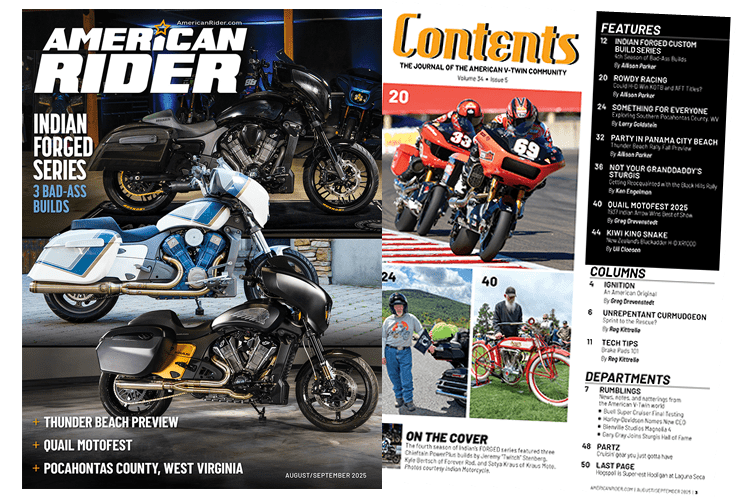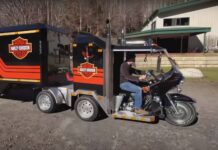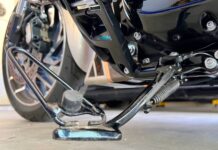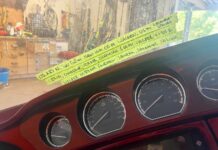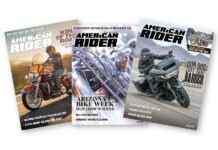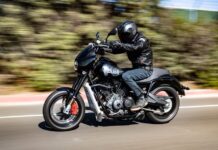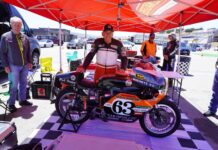 1916 Harley-Davidson
1916 Harley-Davidson
In order to truly understand the spirit of the Motorcycle Cannonball, you have to first know the man who initially struck the spark of interest in the antique motorcycle wildfire that has burned its way around the world. When Lonnie sent out calls to antique riding friends to join him for a run to traverse the nation on their ancient machinery back in 2010, he’d planned to do so from the springy seat of his personal 1916 Harley-Davidson right alongside the 45 riders who had signed up for the first-ever Motorcycle Cannonball Run. Applicants for the endurance run could ride any marque of their choosing, but machines had to be 1916 or older. The excitement of the coast-to-coast ride captured the imagination of motorcyclists everywhere as the group prepared for their fall departure. Lonnie and his crew laid out the course, booked events, arranged hotels and made ready while he watched his bank account dwindle. The event was never designed to make money; it was just a grand plan to get geriatric bikes back to their glory days of life in the wind. Lonnie loved old motorcycles and felt it was shameful that machines were tucked away in stodgy old museums instead of chugging along the countryside. He felt they long ago earned their right to live as they were intended, being ridden.
As the Grand Start grew near, the rookie promoter realized he didn’t have the resources to make the cross-country journey. The overhead of two years of organizing the ride was much more than he’d budgeted for and Lonnie came to a hard realization: he’d have to sell his motorcycle to fund the expedition. He quietly sold his antique and made arrangements to ride the route on a modern bike so he could be available to help riders on the difficult course. He alternately traveled with sweep vehicles to pick up disabled motorcycles along the route and worked to keep riders on the road, enjoying the ride he’d always dreamed of making. Lonnie liked walking the pits at night, visiting with riders, hearing about the performances of the individual bikes. He loved the camaraderie of the riders and the smell of grease and old iron as test laps were made through parking lots. He’d help with advice, twisting wrenches, lining up tools or parts for trade while keeping an eye on the daily scores and fretting with staff over weather patterns or tricky terrain. The dutiful organizer stood with an umbrella over riders as they worked on cantankerous machines and listened to road stories from struggling jockeys. He was selfless in his commitment to riders and even though he was sleep-deprived and exhausted, he thrived. By run’s end, riders were discussing the next ride. Lonnie had intended the Cannonball to be a one-time event, yet after arriving home broke and worn out, the phone was ringing off the hook. Riders wanted to follow him across America again.
By 2012, there was a second run, and another in 2014, after which it was a foregone conclusion that there would be a 2016. Then the unspeakable happened. Lonnie was diagnosed with cancer. Doctors predicted he wouldn’t live to see the next Cannonball. He arranged to turn the enterprise over to Sturgis resident Jason Sims and focused on treatment. By the time riders began arriving in Atlantic City for the 2016, however, Lonnie was taking shakedown laps through the parking lot on his original 1916 Harley. He had bought the bike back from the guy he’d sold it to where it had been sitting, untouched, since Lonnie parted with it in 2010. His father, Lonnie Sr., helped his namesake get the machine roadworthy and, six years after the first run, the founder of the most difficult antique motorcycle endurance ride in the world would finally get to ride with his friends on a 100-year-old bike during his own Motorcycle Cannonball Run.
In poor health, no one was sure how many miles Lonnie Jr. might make, but it didn’t matter. Following along as support, his parents were by his side and ready to go the distance. If Junior was up to the entire 3,306-mile ride, so were they. He rode 71 miles in triple-degree oppressive heat on the first day, spent some time helping the sweep vehicles with disabled bikes and hung out in the pits for a few days before returning home to watch the run play out through social media and online reports while tending to his declining health. Proving doctors wrong, Lonnie fought hard for 31 months after the initial diagnosis and showed us all what class, determination and endurance really means. The Motorcycle Cannonball Run will continue on in his honor.

